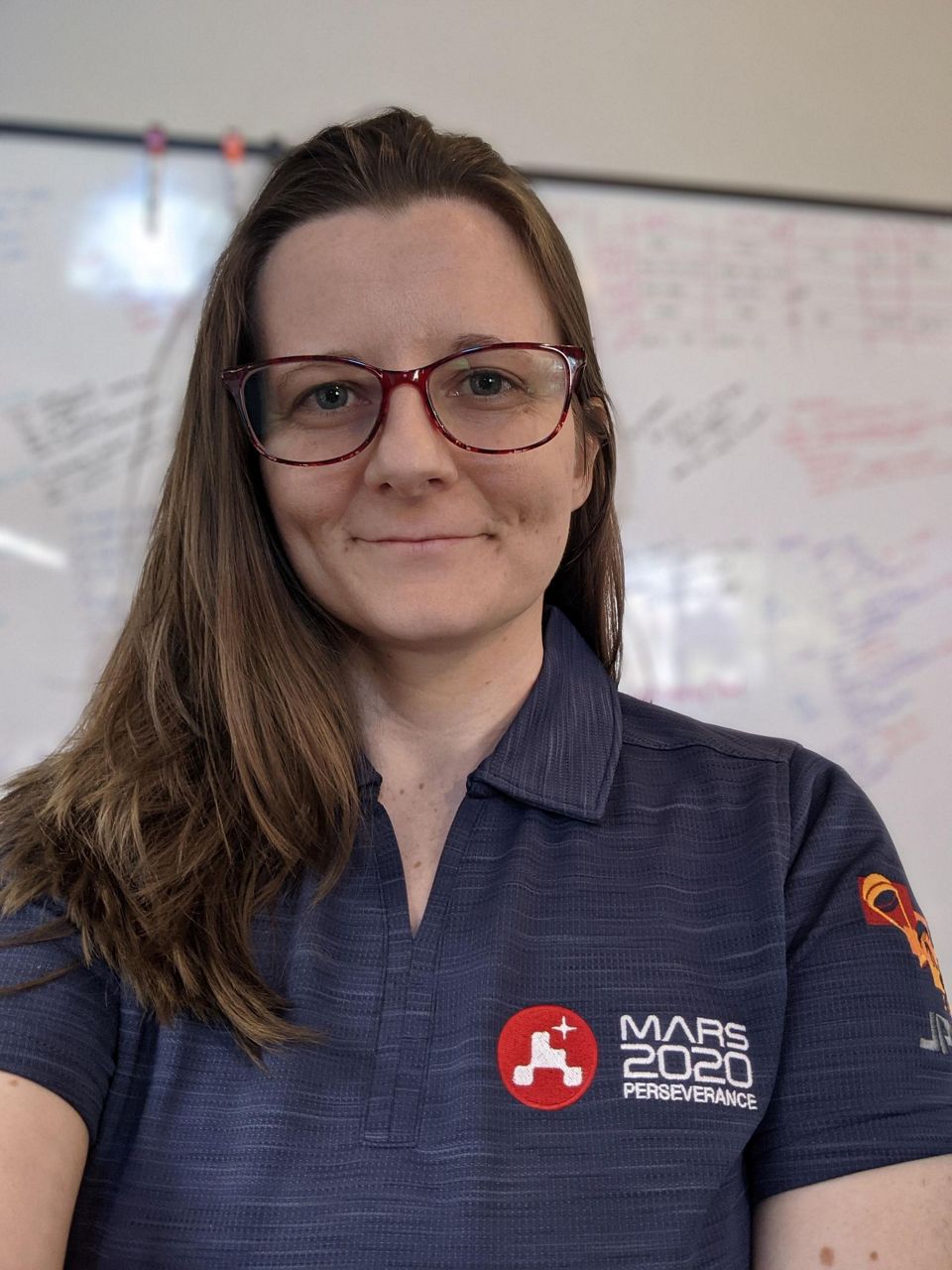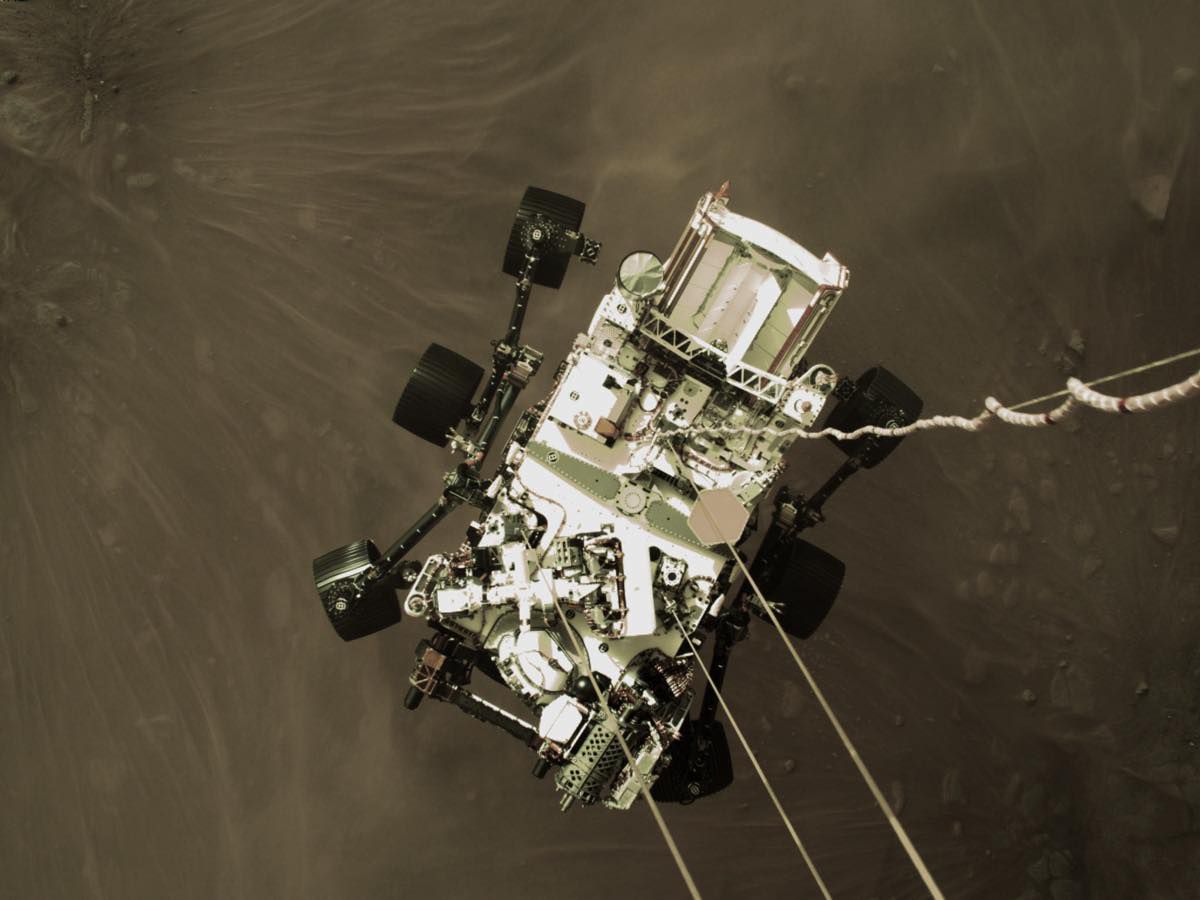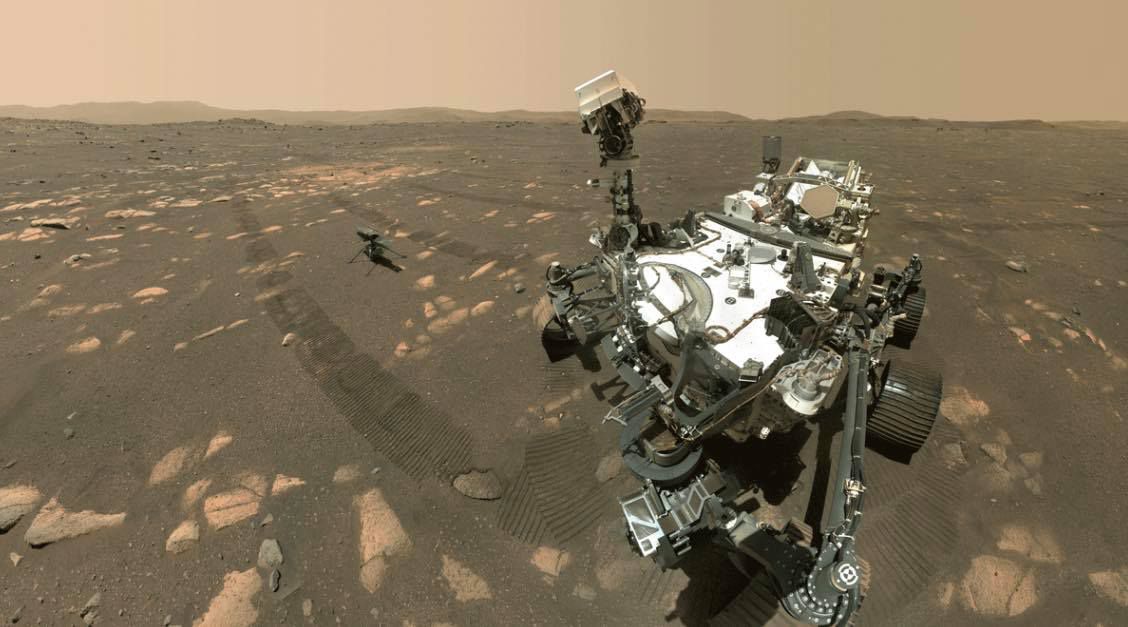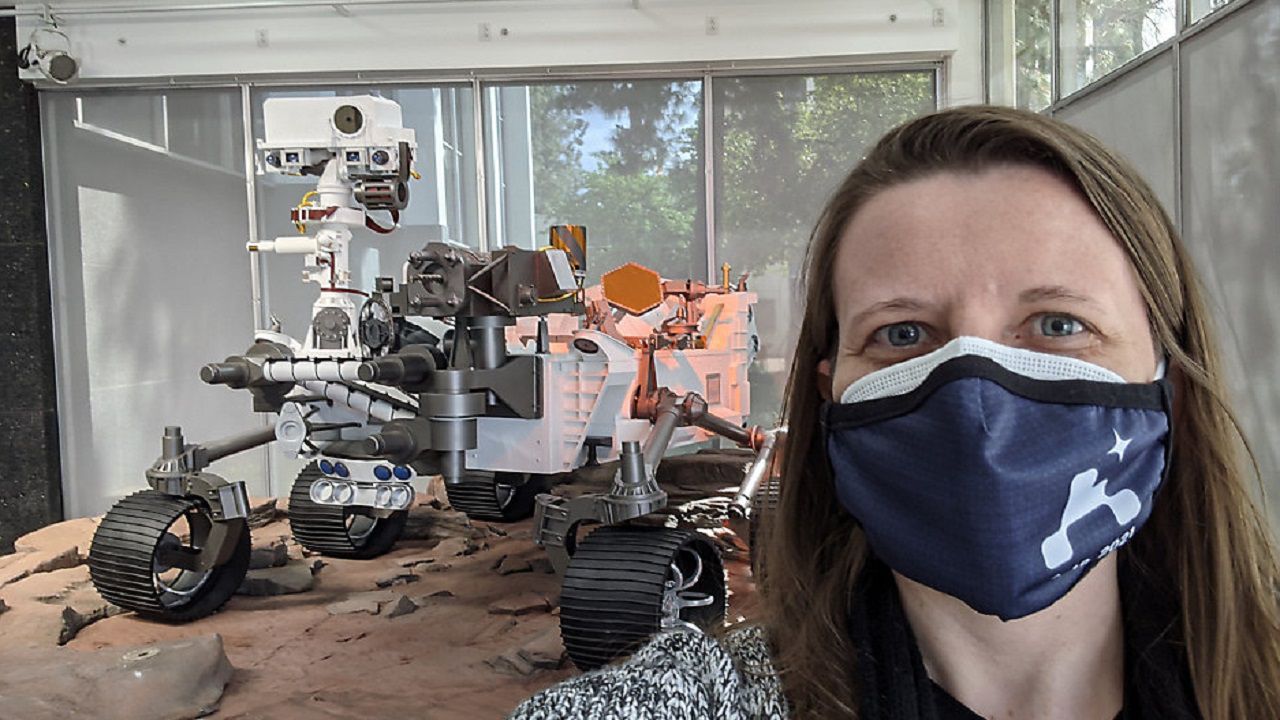We’ve all heard about the much-celebrated “Man With A Plan.”
High achiever, knows what they want, and maps out the shortest path — presumably without the help of Google Maps — to reach their desired destination.
They receive, and deserve, the red carpet of compliments. But today we introduce you to the other side of the coin, Andrea Connell, the “Woman With No Plan.”
Also a high achiever, but one who allowed life’s journey to just play out, the path uncertain, the goal undetermined, but finding her happy place nonetheless.
For Andrea Connell, that happy place is NASA, working on a project that, in part, is laying the groundwork for human exploration on Mars.
But we’ll get back to that.
****
When the native of Holmen, Wis. first showed up at UW-La Crosse, Andrea Connell saw forks in the road everywhere she turned. So, as a second-semester freshman, she went to the advising center where they chatted about her interests and some class offerings that might pair with those.
“So, I was just experimenting with some different types of classes,’’ she said, “and computer science was one of those.”
Yes, it was love at first byte.
“It’s about finding ways to solve problems, so I just really enjoyed that. There’s definitely a lot of logic to it, but there’s also a lot of creativity behind it. So, I just found out that I was really enjoying doing the homework,’’ Connell said, “and even if I’d walk into class and there’d be a pop quiz, I would get excited.’’
Suffice it to say, the “I-Can’t-Believe-My-Luck-That-I-Get-To-Do-A-Pop-Quiz-Today” fan club is a small one, very small.

“It was a surprise to me, too,’’ she said of her affection for the pop quiz. “So, I knew there was something special there.’’
Then, one day while perusing her e-mail, there was a message from the Residence Life office looking for a computer programmer.
“Maybe I was into my second semester of doing computer science classes and I thought, ‘Well, I’m still really new at this and it’s probably a long shot; they probably won’t pick me,’’’ she said. “But, I went ahead and applied anyway, just on a whim.”
She got an interview, then the job, and soon a paycheck less than a year after writing her first line of code. And then, she found herself going around campus, meeting people with various predicaments, figuring out what they needed, then using her classroom skills to solve them.
“Andrea, oh my gosh, she was so gifted,’’ said April Handtke, who oversaw computer science students who worked in the Residence Life office. “She wrote our first program for matching roommates. So students could go on, and take basically an inventory, and find out about other people and then pick their roommates online. And then she wrote that program and put it on Facebook for us.’’
Now, she was really in love.
“That’s where I realized how powerful computer science could be in solving problems for real people, and how it could impact their life on a day-to-day basis,’’ she said. “And that even more solidified, for me, that that was something I could do for the rest of my life and be happy with.”
She found an even greater sense of happiness, marrying her fiancé, Todd, and the two were ready to further their education. Todd was looking to attain his Ph.D. and Andrea her masters. Per usual, no plan was in place. They just applied to multiple schools, hoping to find one that would meet both of their needs.
Hello, University of Hawaii.
“We both got assistantships so that we would have jobs with the university when we got there,’’ said Connell. “It was a good school, and obviously those other benefits, so it worked out all around. It was a great experience.’’
But it was not the sand or the surf or the occasional Blue Hawaiian that proved to be the biggest benefit of attending Hawaii. It was, of course, an e-mail.
The computer science department was always sending out internship opportunities, and the one at NASA stopped Connell in her tracks.
“It sparked my interest, reminding me of how interested I was in science when I was in high school, and even when I was younger, in elementary school, I had this dream of being an astronaut, which I never thought was realistic,’’ she said, “but it brought me back to that.’’
Just like at UW-La Crosse, Connell felt her odds were in the Buster Douglas range, but applied nonetheless. And, just as she did in La Crosse, she got the position — 10 weeks at NASA’s Jet Propulsion Laboratory in Pasadena, Calif.
“One of the things I found interesting is, I don’t think it meets the stereotypes that I had in my head of some place like NASA, where you think everybody is so smart and it’s going to be really scary or intimidating,’’ she said, “that’s not how my experience has been at all.’’

After graduating with her masters, she began working at Amazon in its legal department, writing tools for them to automate legal processes. It met her need for a technological challenge, but the passion just wasn’t there.
So, naturally, Connell turned to the magic that is e-mail, contacting her old supervisor at NASA, who helped her start the process to land a coveted full-time job at the Jet Propulsion Laboratory.
****
Literally years of work was coming down to seven minutes earlier this year on Feb. 18, and the ability of the Mars Perseverance rover to go from a speed of 13,000 mph to 2 mph in that seven-minute span and land safely on planet Mars.
It was a technological marvel, and also like watching overtime playoff hockey x 100.
What’s more, it took 11 minutes — traveling at the speed of light — for the information to get to Earth from Mars.
“So by the time we knew it was even in the atmosphere, it was actually on the ground for a few minutes either working or not working, and we just had to sit back and watch what happens,’’ Connell said. “So there is nothing we can do at that point. Once we’re in that landing phase we’re very hands off. We can’t do anything even if we wanted to, and we just have to see how much the hard work of everyone on the team over years and years has paid off. And, of course, it did.
“It was really exciting and it was kind of surreal, but it was also the knowledge of now is when the real work starts. We have to do all the science and exploration and we get to start all of the actual work that we’ve been planning for.’’
Her time at NASA began working with the Deep Space Network team — which communicates with all of its spacecraft in orbit — and the Cassini Mission, which studied Saturn and its moons in detail.
Connell then moved to the Mars Preservation mission, where she began as a software engineer and created tools for the operations team. She then became part of that operations team, and her job now — along with roughly a group of 25 other people — is basically to send a daily “to-do” list for the rover, while ensuring Perseverance has enough time and power to complete those tasks.
Perseverance is doing an array of information and sample collecting, but one of the most intriguing is doing the legwork for human exploration on Mars.

“We have a couple of ways that we’re doing that,’’ she said. “One is we have an instrument called MOXIE (Mars Oxygen In-Situ Resource Utilization Experiment), which is an experiment that is generating oxygen out of the Martian atmosphere. So the atmosphere on Mars is like 95% carbon dioxide and this instrument is able to pull the carbon dioxide and split it out into oxygen, so that is obviously important for humans to breathe, but it is also important as propellant. So, if we want to send astronauts, ideally we’d have a way for them to launch back off the surface of Mars and get back to Earth and MOXIE is an important part of that process of the launch.
“So if we can generate oxygen out of the Martian atmosphere, that’ll be much easier to take humans and have them live there safely and have them get back home safely. It’s also checking the weather and radiation, and we have samples of spacesuit materials on the rover so we can how they perform over time in that environment.’’
So the question is, when might human exploration of Mars become a reality?
“There’s a lot we have to put in place before we get there,’’ Connell said. “I think NASA is planning for the end of 2030s, and that seems reasonable to me. It takes seven-to-nine months just to get to Mars and, of course, if we send humans there, we probably want to send up a lot of infrastructure ahead of time so they have a place to live and know they have a way to get back home and things like that. There’s a lot of milestones we have to reach, so the end of 2030, about 15 years from now, that seems reasonable.’’
And if the stars align, Andrea Connell would love to be a part of that exploration team.
“You certainly would have to have astronaut training, at least if you’re going through NASA. You have to have all the normal astronaut learning processes and training,’’ she said. “I think it would be really exciting to do that, to be one of the people who are exploring a brand new place, and then come home and bring everything you’ve learned and explored and bring that back to help people on earth. That would be very cool. I don’t know if I would be one of the people they’d want, but I’d certainly put myself into the running.”
Which, according to Handtke, wouldn’t be surprising at all.
“We said from the very beginning that this is a young woman who is going places,’’ she said.
But Mars?
Story idea? You can reach Mike Woods at 920-246-6321 or at: michael.t.woods1@charter.com



